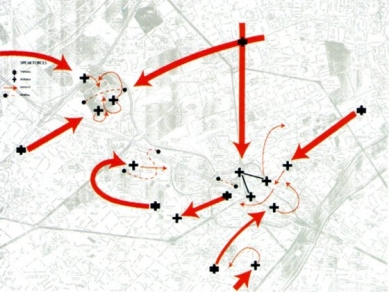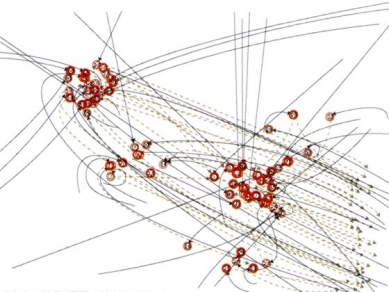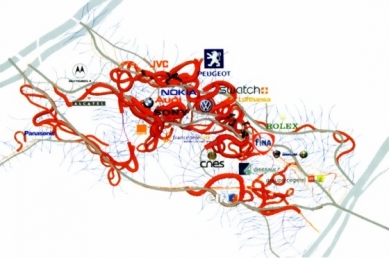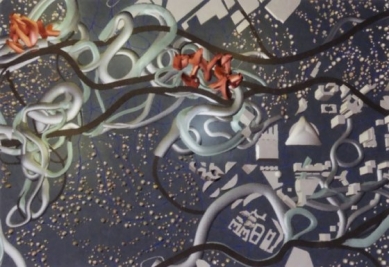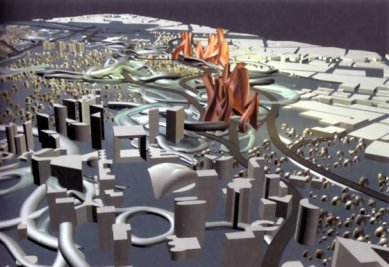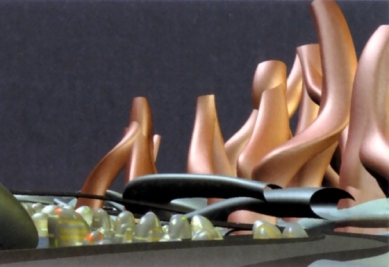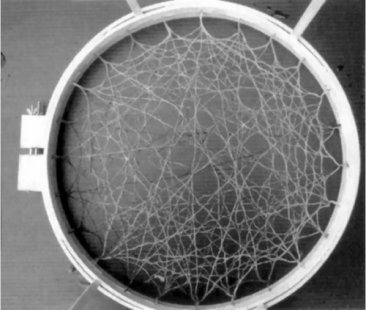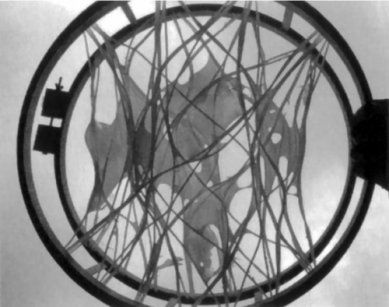
ParisBRAIN

ParisBrain is an urban study of the western part of the administrative district of La Défense - it is the same place that Rem Koolhaas worked on ten years ago in his project 'Tabula Rasa Revisited'. Following 'Soft Site' (Rotterdam, 1997) and 'Off'the Road' (Eindhoven, 2000), ParisBrain is another study of the Nox studio's open and flexible urbanization program, which aims to incorporate an increasing number of variable constraints, but primarily to open up experiences of the city as if it were itself a substance. To materialize this substance, Nox focuses on so-called 'wet computers', drawing inspiration from cotton threads used by Frei Otto in the 1970s. Initially, the territory is mapped with lines based on psycho-geographical research. Repeated points are marked on the model with pins and then connected to one another with cotton threads, consciously with a certain intent. The whole thing is then submerged in water. Under the effects of water, the paths intertwine, adhere to one another, and denote the main routes; around them, zones with openings and secondary intersections emerge. With absolute unpredictability, after several submersions, a network is revealed, determined by a logic - encompassing elements of randomness - that no model can grasp. This complex network is neither a grid nor a labyrinth. Despite all its consequences, it thrives in the combination of until now incompatible qualities of orientation and disorientation, intention and experience, order and chaos, all of which have become alternative situations within one and the same system. Somewhere on the boundary of artistic performance and recorded scientific experiment, this empirical process produces hybrid forms that are ultimately digitized for use in other projects. The cotton thread framework is literally transformed into an IT version of the urban plan, serving as an automap, a model of the spatial arrangement of buildings, or even the essence of architectural form.
Wet grid is an arrangement in which movement is structurally absorbed by the system; it is a combination of local and overall movement, adaptability, and motion. The wet grid views the body as a directed landscape, the form of which is determined by grooves (lines) and less defined areas, which are surfaces. Movement must be viewed as a message, where deviation can be absorbed by the system, and subsequently (analogously) inputted from the computer. Lines are elevated in a potential field that acts upon the line, from which suddenly a curve emerges. The curve is a straight line with a greater amount of openness, on which one can effortlessly partly return one’s steps, where otherwise one might be disoriented by forgetfulness. It complicates your journey, making it diverse and traversable. The wet grid is still a network, topological and curvilinear.
Wet grid is an arrangement in which movement is structurally absorbed by the system; it is a combination of local and overall movement, adaptability, and motion. The wet grid views the body as a directed landscape, the form of which is determined by grooves (lines) and less defined areas, which are surfaces. Movement must be viewed as a message, where deviation can be absorbed by the system, and subsequently (analogously) inputted from the computer. Lines are elevated in a potential field that acts upon the line, from which suddenly a curve emerges. The curve is a straight line with a greater amount of openness, on which one can effortlessly partly return one’s steps, where otherwise one might be disoriented by forgetfulness. It complicates your journey, making it diverse and traversable. The wet grid is still a network, topological and curvilinear.
The English translation is powered by AI tool. Switch to Czech to view the original text source.
0 comments
add comment


